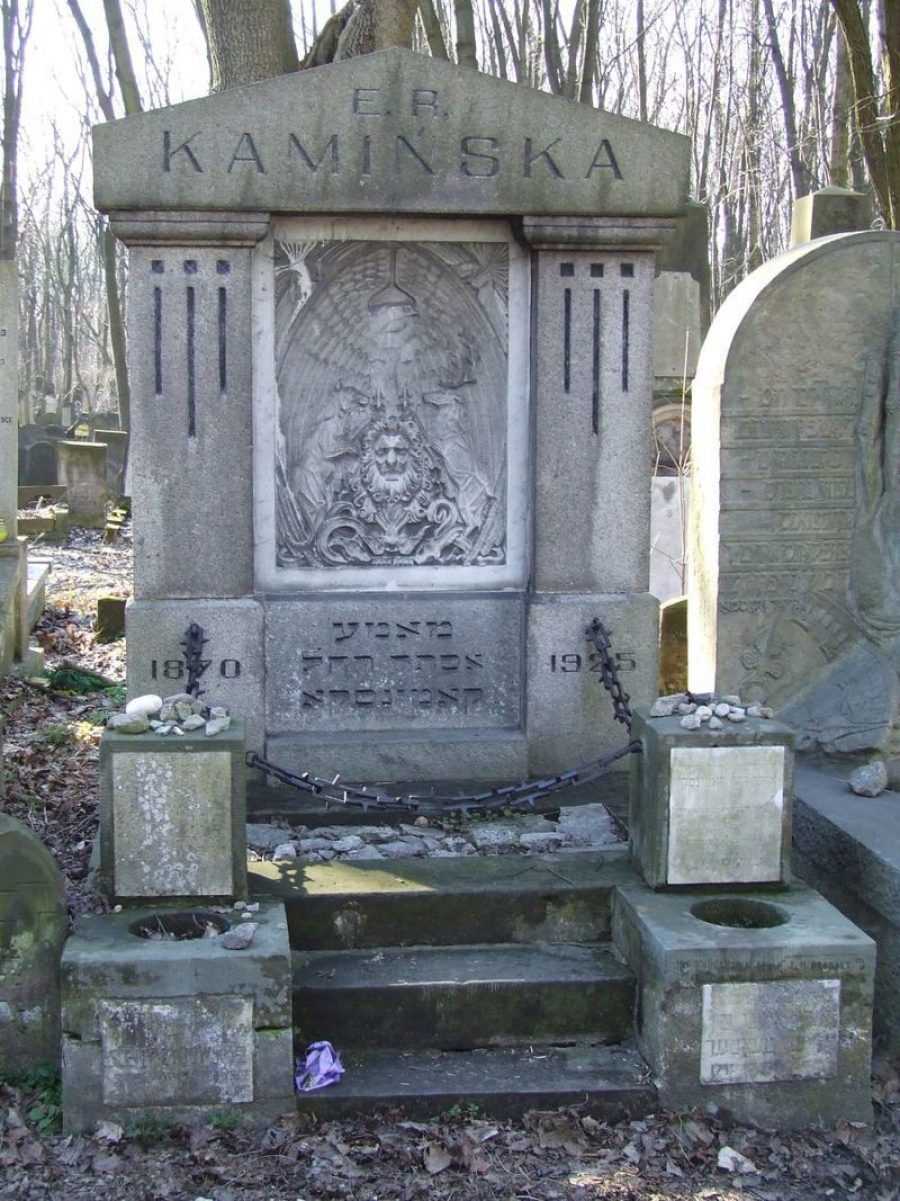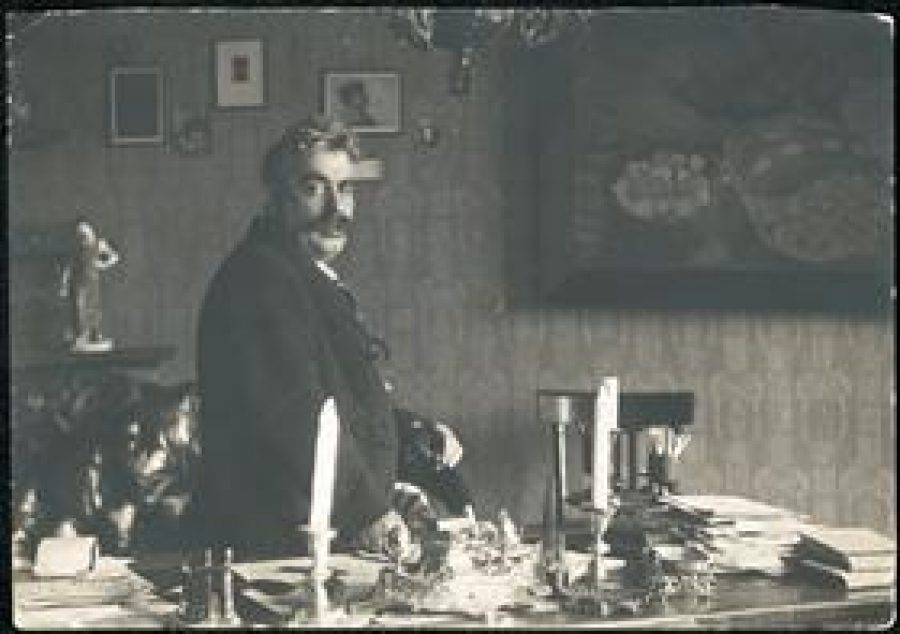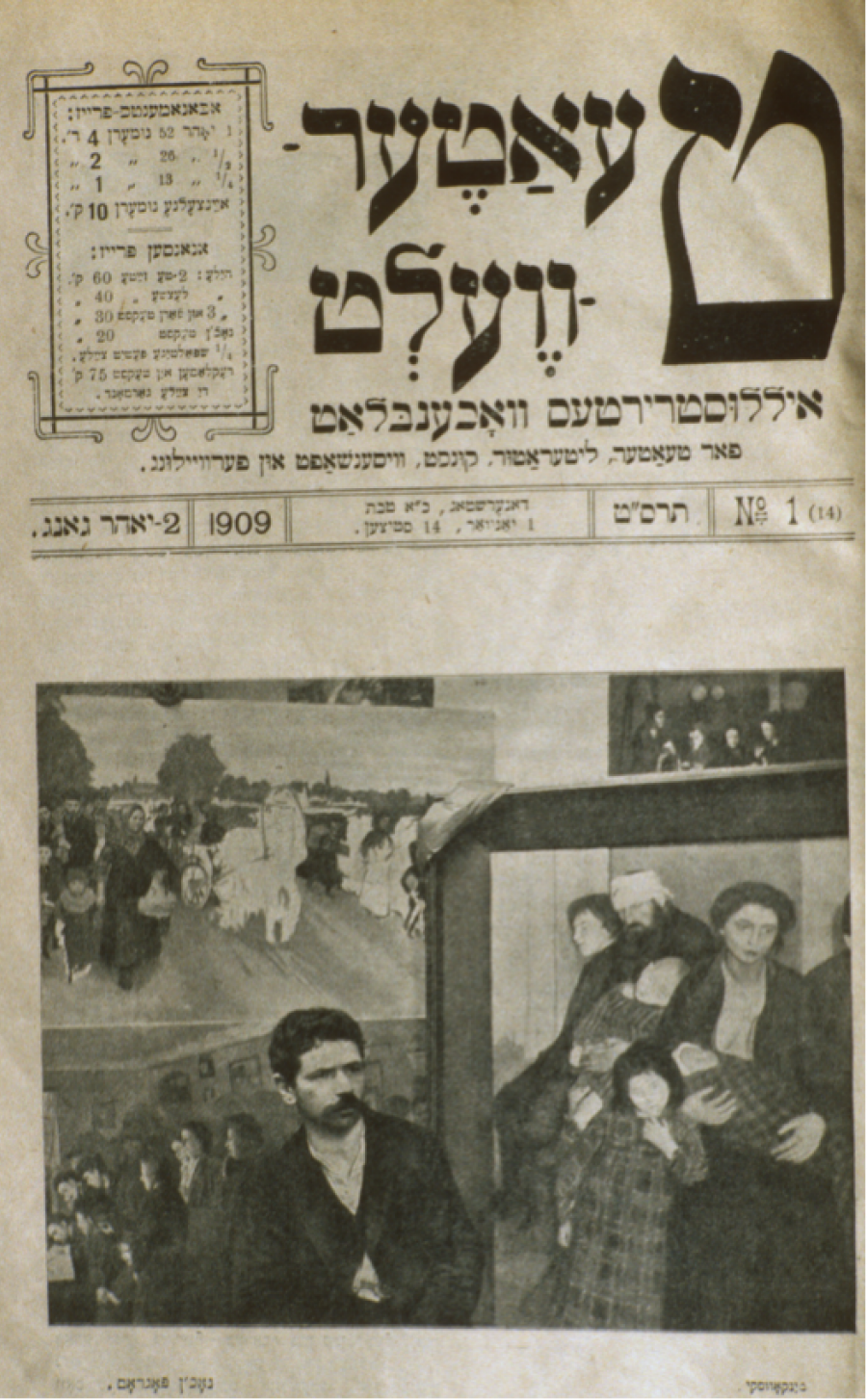
Maurycy Minkowski, “Queen Esther” (or “Esterka”), in Tygodnik ilustrowany (Warsaw), 1911. Jewish Historical Institute, Warsaw.
A Writer, a Painter, and Queen Esther
Zachary Baker
For readers of this blog, Purim reminds us that modern Yiddish theatre traces its lineage from the traditional folk drama genre known as the Purim-shpil. According to the literary historian Jean Baumgarten, the “Purim-shpil primarily drew on themes from traditional Jewish texts” – and not just the dramatic episodes recounted in Megilat Esther. For example, among the most popular plays in the Purim-shpil repertory was Mekhires Yoysef – the selling of Joseph – based on the family saga that rounds out Genesis. Oddly, the Jews’ champion in the Megillah, Queen Esther, appears not to have been a major protagonist in the Purim-shpiln.

Woodcuts depicting Mordekhai, Haman, and jesters, from Akta Ester mit Akhashverosh (Prague: Sons of Yehudah Bak, 1720).
So, let us shift our focus from the Purim-shpil to a once-famous painting of Queen Esther and the actress who posed for it, the artist who painted it, and the famous writer who was their patron. The story behind that painting underscores the intersections between the dramatic, visual, and literary arts in Warsaw just before World War I. The actress was Tea Arciszewska; the painter was Maurycy Minkowski; and the writer was I. L. Peretz.
Arciszewska (née Lipski) sat for Minkowski around 1910. The painter had earned his fame a few years earlier, through his jarring depictions of Jewish victims of Tsarist-era violence. (Many of his paintings bear the identical title: “After the Pogrom.”) At the same time, Minkowski pioneered a new subspecialty in Jewish genre painting: the idealization of the Jewish woman.

Maurycy Minkowski, “Queen Esther” (or “Esterka”), in Tygodnik ilustrowany (Warsaw), 1911. Jewish Historical Institute, Warsaw.
Minkowski’s “Queen Esther” was sometimes identified as “Esterka,” after the legendary Jewish consort of the fourteenth-century Polish King Casimir the Great. Either way, it can be viewed as a portrait of a legendary Jewish heroine. When this painting was displayed at an exhibition of Jewish painters in Warsaw in 1913, it made “an especially strong impression” upon Syome, the pseudonymous journalist who covered the opening for the newspaper Der moment.
“Queen Esther” is a beautiful young woman clad in a floral gown, with a patterned headdress or shawl covering her hair. She is standing on an elaborately tiled floor, evidently in a palace. Extant reproductions render the background somewhat murky, but a ram’s head is clearly mounted on a pedestal behind her and to the right. The carved wooden frame is a characteristic Minkowski creation as well, with representations of the naked Adam and Eve at the top, a gargoyle on the lower right, and what appears to be a man (perhaps Abraham at the Akedah?) with a knife blade poised to slaughter a lamb

Ester-Rokhl Kaminska’s tombstone in the Okopowa Street Cemetery, Warsaw; sculpture by Szymon Kratka.
Minkowski’s model, Tea (or Tocia) Arciszewska, was elegant, petite, and with finely chiseled features. Her husband at the time was the artist Szymon Kratka, who is remembered for his tombstone sculpture commemorating the famous Yiddish actress Ester-Rokhl Kaminska, which can still be visited in the Okopowa Street cemetery in Warsaw. (Arciszewski was her second husband’s surname; she was married a third time, to the Polish Yiddish writer Efroim Kaganowski.)
Born circa 1890, Arciszewska made quite an impression on the Yiddish writer I. L. (Yitskhok-Leybush) Peretz, who persuaded her to join an amateur theatre troupe that he was organizing. The stage name that he gave her was Miriam Izraels. (Decades later, she would publish a play bearing the title “Miryeml.”)
It is quite likely that Arciszewska and Minkowski first met through the good offices of Peretz. The writer’s affection for Minkowski’s work was later recounted by the Yiddish literary critic A. Mukdoni: “For years a painting by Minkowski hung opposite I. L. Peretz’s desk,” he wrote. The painting depicted a ten-year-old girl, apparently in the marketplace, with a basket of apples at her feet. “Peretz spotted the picture at one of Minkowski’s exhibitions,” Mukdoni wrote. “As was his wont, he immediately became very excited, ran up to Minkowski and told him that he was going to buy the picture.” The transaction was promptly completed by Peretz’s “finance minister,” the Yiddish writer Yankev Dinezon.

I. L. Peretz, in his study, Warsaw, before 1915. Minkowski’s painting of a marketplace scene hangs on the wall behind the writer’s desk. YIVO Encyclopedia.
According to the Yiddish editor Melech Grafstein, Miriam Izraels performed in at least two of Peretz’s dramas, the one-act play “S’brent” (It’s Burning) and “In polish oyf der keyt” (Chained in the Synagogue Vestibule). In the 1920s she became one of the founders and stalwarts of the Azazel revue (kleynkunst) ensemble in Warsaw. Interestingly, theatre historian Miroslawa M. Bulat links kleynkunst to – among other things – “older forms of Yiddish performance, that of purim-shpilers and badkhonim” (wedding bards).
Mukdoni described Tea Arciszewska as “delicately built… [and] so thin that her posture was slightly stooped.” He did not think much of her acting: “She lacked the most elementary qualities of a performer.” To which Peretz retorted, “A Litvak will never be able to grasp” Arciszewska’s talents. (Mukdoni was from Lekhevitsh [Lyakhovichi], near Minsk.) As for “Queen Esther,” Mukdoni felt that the painting made the model out to be “considerably prettier and more majestic than she actually was.”

Maurycy Minkowski in his Warsaw studio, flanked by several of his paintings. Teater-velt, vol. 2, no. 1 (January 1, 1909).
“Queen Esther” accompanied Maurycy Minkowski on his travels and was displayed at his many gallery exhibitions. Sadly, the painting’s fate is unknown. After Tea Arciszewska survived a Nazi concentration camp she settled in Paris, and wrote for the periodical Far undzere kinder (For Our Children). Her drama “Miryeml” – which she had worked on for years – won a literary award in 1954 and was published in 1958. I. L. Peretz, their artistic patron, had died in Warsaw in 1915.
The decades preceding the First World War witnessed a flowering of the arts among Jews in Poland and elsewhere. Peretz, one of the three klasiker in the Yiddish literary canon (the others being Mendele Moykher-Sforim and Sholem Aleichem) was just a generation older than the painter of “Queen Esther” and his model. For Peretz, Minkowski, and Arciszewska, their art was cut from the same cloth.
[Portions of this blog post are excerpted from my article, “The Painter As Ethnographer: Maurycy Minkowski and the European Yiddish Intelligentsia before World War I,” in Czernowitz at 100, Kalman Weiser and Joshua A. Fogel, editors (Lanham: Rowman & Littlefield, 2010), pp. 125-135.]
